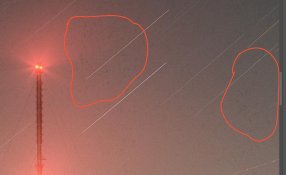Alan_Silvester
Member
Morning all,
I've noticed I've been getting some marks in my long exposure shots recently. I've attached a few screen captures to show what I'm getting. Anyone got any advice as to what they think it could be and at what stage of the process I might be getting these marks? They remind me of dust spots I used to get on my 5d but they look too dense to be dust and I've checked the mirror and it's relatively clean.
Any advice would be greatly appreciated.
Image details -
Mamiya RZ67 pro 2, f32, 16 minutes exposure with dark sky. Portra 400 at box speed. Scanned on coolscan 9000 as hdi raw and processed in photoshop. spots show from initial scan.
Thanks
I've noticed I've been getting some marks in my long exposure shots recently. I've attached a few screen captures to show what I'm getting. Anyone got any advice as to what they think it could be and at what stage of the process I might be getting these marks? They remind me of dust spots I used to get on my 5d but they look too dense to be dust and I've checked the mirror and it's relatively clean.
Any advice would be greatly appreciated.
Image details -
Mamiya RZ67 pro 2, f32, 16 minutes exposure with dark sky. Portra 400 at box speed. Scanned on coolscan 9000 as hdi raw and processed in photoshop. spots show from initial scan.
Thanks








